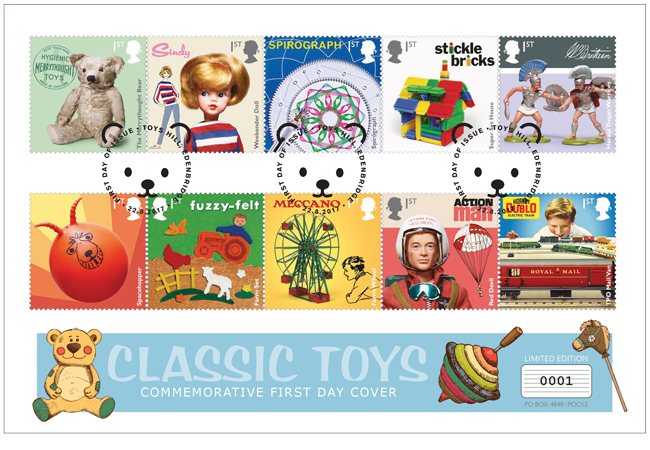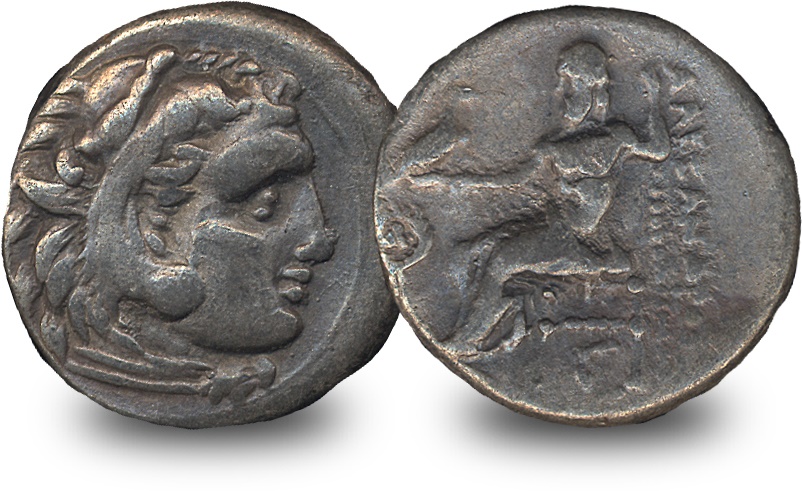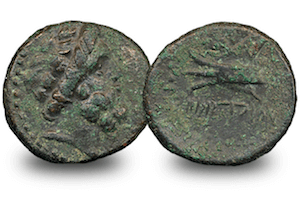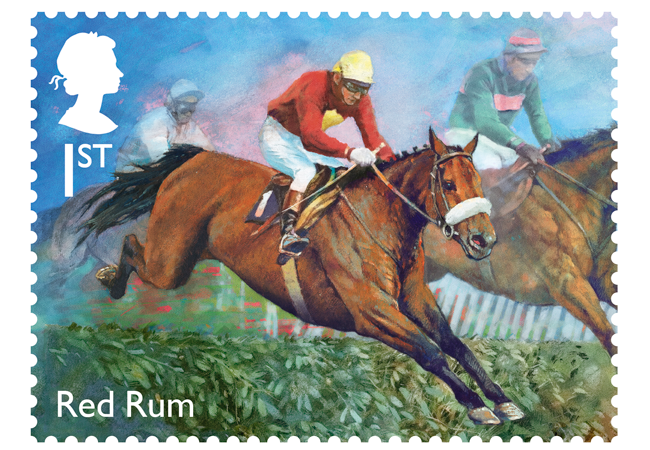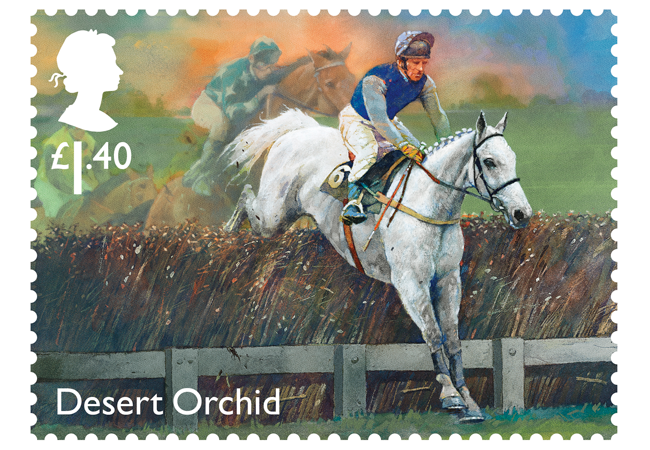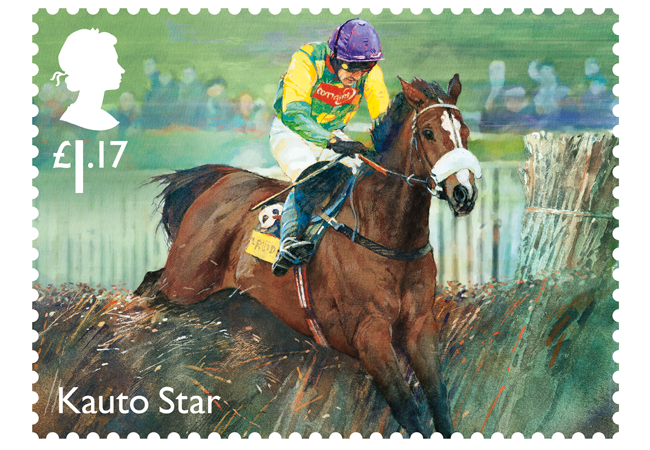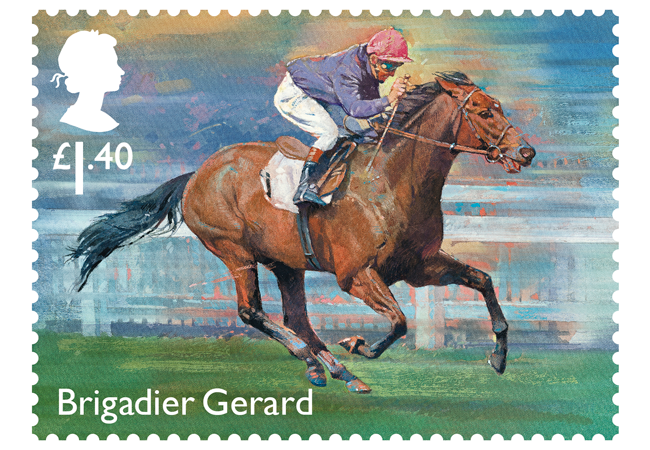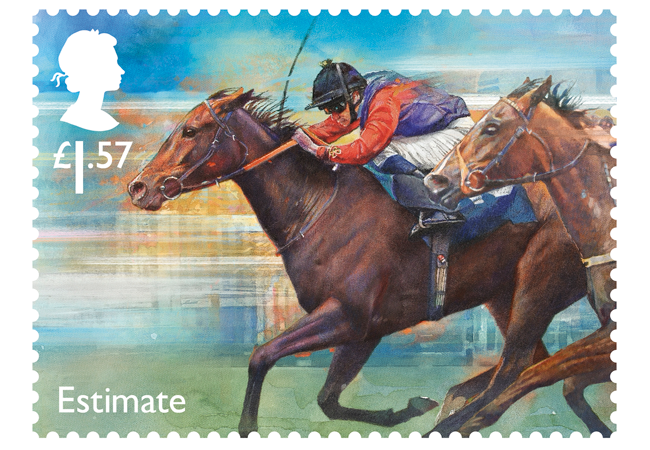Posts by Lauren Brewer
Remember the ‘Classic Toys’ of your childhood – vote for your favourite
This August Royal Mail will be releasing a brand new set of stamps which will undoubtedly prove popular with collectors young and old.
The stamp issue celebrates ten of the UK’s most iconic and beloved ‘Classic Toys’ from the last 100 years – from Meccano to Action Man.
And although this brand new issue will undoubtedly evoke strong feelings of nostalgia across generations, given the variety it certainly begs the question, which was your favourite?
Take a look at the stamps above and VOTE for your favourite on the poll at the bottom of the page
Here’s a little bit more about each of the stamps:
1)1st Class: Merrythought Bear
Merrythought is a toy manufacturing company established in 1930. Its most famous individual bear was arguably ‘Mr Whoppit’ which was based on the “Woppit” character from the Robin comic in 1956.
2) 1st Class: Sindy Doll (first appearance 1963)
Sindy was the best-selling toy in the UK in both 1968 and 1970. With her wholesome looks proving a big hit. Originally designed by Dennis Arkinstall for Pedigree Toys and Dolls, she was modelled on an adolescent girl, and new outfits were issued every six months.
3) 1st Class: Spirograph (first appearance 1965)
Spirograph employs complicated mathematical formulae to create hypotrochoids and epitrochoids, using ‘rotor’ and ‘stator’ pieces. This sounds much too complicated for a toy aimed at children, but the mathematics works unseen in the background – all a child has to do is stick a coloured pen through a hole in one of the Spirograph tools on a piece of paper, twirl it around a few times and watch a pattern emerge. Awarded ‘Toy of the Year’ by the British Association of Toy Retailers in 1967.
4) 1st Class: Stickle Bricks
Stickle Bricks are primarily intended for toddlers and were invented in 1969. An individual stickle brick is a colourful plastic shape which is a few centimetres long and which has a “brush” of small plastic “fingers” on one or more edges. The fingers of adjacent stickle bricks can interlock, allowing them to be joined in various ways.
5) 1st Class: W. Britain Toy Figures
The William Britain company originally produced lead soldiers but subsequently switched to plastic, acquiring a manufacturer of plastic soldiers, Herald, in 1959. The soldiers proved particularly popular in the 1970s, the key selling point being that they came ready-painted. US Cavalry, Greek warriors and cowboys and Indians were among the most popular characters.
6) 1st Class: Space Hopper
Although the origins of this concept are Italian, it was initially intended as an exercise device rather than as a toy and featured a wooden handle. The version we know and love was a British creation, from Mettoy who added the ribbed, antennae-like handles and the iconic kangaroo face, in 1969. The ‘Space Hopper’ name captured the imagination of children.
7) 1st Class: Fuzzy-Felt
Fuzzy-Felt was created in 1950 by Lois Allan and comprises a flocked backing board onto which a number of felt shapes – silhouettes or more detailed printed versions, it can be placed to create different pictures.
8) 1st Class: Meccano
Invented by Frank Hornby, this was originally marketed as ‘Mechanics Made Easy’ (1901), but the name was switched to the more familiar Meccano in 1907. Meccano retains the basic elements including the spacing on the perforations and the 5/32inch Whitworth thread on the screws, meaning that new Meccano sets can still incorporate old pieces. Meccano is one of the crown jewels of the British toy industry, although now French-owned, Meccano remains amongst the most collectable of British toy manufacturers.
9) 1st Class: Action Man
American toy firm Hasbro invented the concept of a doll that boys could play with – 1964’s GI Joe, with features based on decorated war veterans. The first dolls for the UK market appeared in 1966, initially named Action Soldier. Among the most popular are footballer kits and the Red Devil parachutist, Action Man was awarded ‘Toy of the Year’ by the British Association of Toy Retailers in 1966. A 2004 poll of the public to find Britain’s Favourite Toy placed Action Man at number 2.
10) 1st Class: Hornby Dublo
Frank Hornby first introduced the scale model train sets in 1920. Originally, sets were built on the ‘O-gauge’ scale (about twice the size of the current Hornby sets). Hornby’s genius was to switch to the OO-gauge (known as ‘Horny Dublo’) from 1938, which allowed for complex layouts to be built on a smaller budget and in a smaller space, taking into account the modest size of the average British living room. Hornby trains are able to appeal to many different character types across multiple generations.
Which was your favourite? VOTE NOW in our poll below:
If you’re interested…
Pre-order your ‘Classic Toys’ First Day Cover today
The ‘Classic Toys’ stamps are sure to be of interest to anyone who fondly remembers the iconic British toys explored in the Royal Mail issue.
You can reserve all of the new ‘Classic Toys’ stamps now on a limited edition First Day Cover.
The coins behind the Ancient Greek myths…
Ancient Greek civilisation provided the foundations for Western culture. One of the empire’s most recognised legacies is Greek mythology, which had an extensive influence on arts and literature in the West. Greek myths tended to describe the lives of Greek Gods including their births, victories in battle, love affairs and their connection to certain city-states.
One artifact which pays homage to Greek mythology is Ancient Greek coinage. Greek currency was the first to be minted on an imperial scale and has influenced commerce across the world.
Coins were hugely important as a medium of exchange and an important store of value and source of prestige. Greek coins used a combination of figures, symbols and inscriptions to symbolise each ruler’s territory. Each city state in Ancient Greece was said to be protected by a certain character from Greek mythology and one of the most identifiable features of Greek coinage are the Gods and Goddesses which are struck on many of the coins of the time.
I have taken a look at some of the most famous myths that were struck on coins from the time, some over 2,000 years old!
Zeus ‘King of the Gods’
Issued in the 2nd century BC this coin depicts Zeus the chief of the gods and believed to be the ruler of mankind. It’s believe that Zeus saved his brothers, Poseidon and Hades, after they had been eaten by their father Cronus. The three of them divided creation between them. As the Father God, Zeus was the dispenser of good and evil and the upholder of morality.
Hercules ‘Son of Zeus‘
Alexander the Great often issued coins depicting himself dressed as Hercules, wearing a headdress made of the scalp of the Nemean lion – one of Hercules’ “12 tests”. Hercules is famed for being the strongest of all mortals. However, his physical power was offset by a lack of intelligence and strong emotions. Many of Hercules’ great deeds occurred while doing penance for stupid acts done in anger or carelessness.
Apollo ‘God of Music’

The Ancient Greek Apollo ‘God of Music’ Coin
This coin is an example of one of many coins issued depicting Apollo, the son of Zeus. Apollo is considered a complex god of many things including music, poetry, art, oracles, archery, plague, medicine, sun, and knowledge. He is often depicted playing the lyre and is represented as an ever youthful god.
Ares ‘God of War’
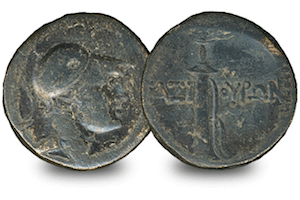
The Ancient Greek Ares ‘God of War’ Coin
Issued in the 1st Century BC this coin depicts Ares, the God of war and violence. Fittingly the reverse of this coin features a sword. Ares was a superior fighter in battle and caused great bloodshed and destruction, but he also had a reputation for being cowardly.
The Dioscuri ‘Patron Saint of Sailors’

The Ancient Greek Dioscuri ‘Patron Saints of Sailors’ Coin
This coin features the Dioscuri; the twin brothers of Castor and Pollux. Pollux, the son of Zeus, was immortal but Castor was mortal. When Castor was murdered, Pollux asked his father Zeus if he could share his immortality with his brother. So they transformed into the constellation Gemini, able to travel back and forth between Olympus and Hades. They are also known as protectors of sailors, able to calm the seas and winds in storms.
Gorgon ‘Medusa’

The Ancient Greek Gorgon ‘Medusa’ Coin
Medusa was the only mortal of the three powerful winged Gorgon sisters. It is believed that Medusa was transformed into a monster by Athena. Medusa’s hair was made of snakes, although it is depicted as wild leaves on this coin, and she was said to be able to turn people to stone with a glance. She was killed by the hero Perseus, who used the metal of his shield as a mirror to avoid eye contact with Medusa.
Histiaea ‘Patron Saint of Histiaea’

The Ancient Greek Histiaea ‘Patron Saint of Histiaea’ Coin
This small silver coin is known as a “tertobol” and weighs just over 2 grams. It pictures Histiaea, the nymph, on both the obverse and reverse. Histiaea was named after the ancient city of Histiaea on the second largest Greek island, Euboea. Mythical Naiads lived in the lakes here and being immortal, were invited to the assemblies of the gods on Mount Olympus.
Poseidon ‘God of the Sea’

The Ancient Greek Poseidon ‘God of the Sea’ Coin
Poseidon was worshipped as the god of the sea, earthquakes and horses. Poseidon is often portrayed with his best known weapon, the trident, which he used to shake the earth and create storms, causing devastating earthquakes and tsunamis. It is this trident that is featured on the reverse of this coin. The coin was issued by the Syracuse in the 3rd Century BC, as Poseidon was greatly important to them as a maritime city/state.
Tyche ‘Goddess of Cities’

The Ancient Greek Tyche ‘Goddess of Cities’ Coin
Tyche was the personification of fortune and controlled the luck and prosperity of a city. On this coin she is depicted with a crown of city walls and the reverse depicts a cornucopia, a symbol of good fortune. Tyche was said to have carried a large horn containing riches, which she would sporadically spread to individuals and cities. When no cause could be discovered for events such as floods, droughts or political upheaval, they were often attributed to Tyche.
If you’re interested…
Now you have the chance to own The Zeus ‘King of Gods’ Bronze Coin, which is over 2000 years old. How many people can say they own a piece of ancient history whose story has had such impact on the world today?
So if you want one, click here for details before they sell out.
New Royal Mail Stamps to celebrate ‘Sport of Kings’…
…And our day with Grand National Winning Jockey Bob Champion MBE
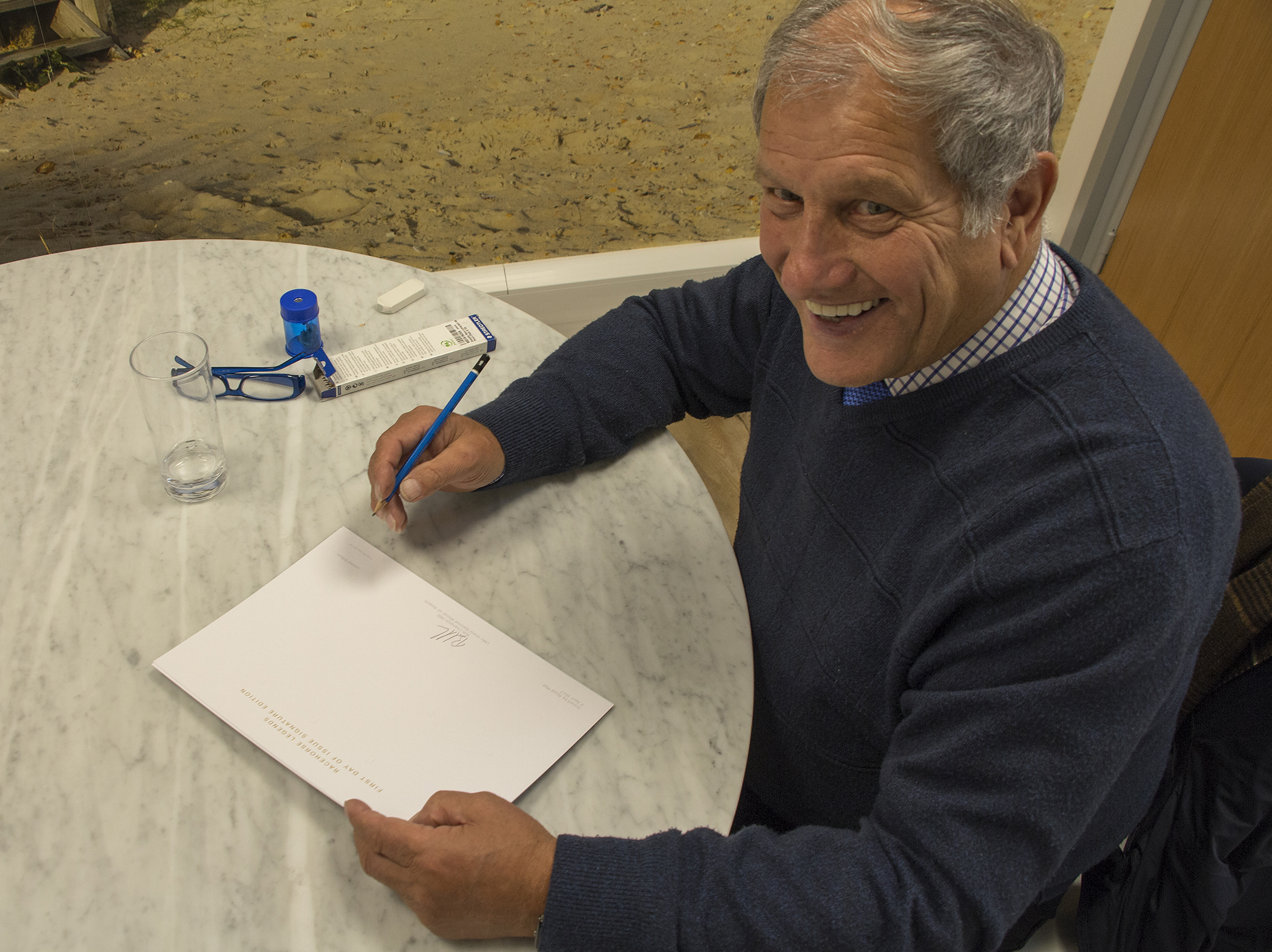 We were visited recently by 1981 Grand National Winning Jockey Bob Champion MBE.
We were visited recently by 1981 Grand National Winning Jockey Bob Champion MBE.
Bob’s remarkable story is well documented. Given just 8 months to live after being diagnosed with cancer in 1979, he rode to victory two years later astride 11-year-old Aldaniti at the Grand National – Britain’s most cherished jump race.
Bob would subsequently win the 1981 BBC Sports Personality Team of the Year award alongside Aldaniti, before being awarded his MBE in 1982.
And so when Bob agreed to come down to our offices to sign the 500 framed Royal Mail Racehorse Legends stamps, we were absolutely delighted.
 The stamps, revealed below, feature horses which have all in the their own unique way created a piece of British horse racing history. They are scheduled for release on 6 April 2017 – the first day of the Aintree meeting ahead of this years’ Grand National.
The stamps, revealed below, feature horses which have all in the their own unique way created a piece of British horse racing history. They are scheduled for release on 6 April 2017 – the first day of the Aintree meeting ahead of this years’ Grand National.
So it felt fitting that Bob should be the man to sign these framed presentations – exclusively for Westminster Collection customers – given his quite remarkable and irrefutable status in the Grand National Hall of Fame.
Here are some details about the eight new stamps…
Voted no. 3 favourite horse by Racing Post readers. Greatest race: 1977 Grand National (ridden by Tommy Stack). The only three time winner of the Grand National.
Won 27 of his 35 starts. Voted no. 1 favourite horse by readers of Racing Post. Greatest race: 1964 Cheltenham Gold Cup (ridden by Pat Taaffe). His first Cheltenham Gold Cup was a dramatic win as he dethroned Mill House and showed his greatness for the first time. Described by John Randall and Tony Morris in their book A Century of Champions as “…a freak, an unrepeatably lucky shake of the genetic cocktail, the nearest thing the sport has ever seen to the perfect machine”.
“Dessie” – voted no. 2 favourite horse by Racing Post readers. Greatest race: 1989 Cheltenham Gold Cup (ridden by Simon Sherwood). Added drama of a narrow win in this famous victory.
Greatest race: 2009 King George VI Chase (ridden by Ruby Walsh). His huge 36-length victory enabled him to replace Desert Orchid as the top-rated steeplechaser.
Unbeaten in his 14-race career, Frankel is the top-rated horse in the world since the World Best Racehorse Rankings were initiated in 1977. Greatest race: The 2000 Guineas in 2011. Frankel is named after the Hall of Fame trainer, Robert Frankel and was trained by Sir Henry Cecil. Ridden by: Tom Queally.
Won 17 of his 18 races and named British Horse of the Year 1972. Voted no. 5 favourite horse by Racing Post readers. Greatest race: 1971 2000 Guineas (ridden by Joe Mercer). His defining moment, beating Mill Reef his great contemporary.
European Horse of the Year 1978. Guardian Classic Trial, Chester Vase, Derby, Irish Derby, King George VI and QEII Stakes (1981). Greatest race: Epsom Derby 1981 – longest winning margin in that race’s history.
£1.52 – Estimate:
To the delight of Her Majety the Queen, Estimate won the 2013 Gold Cup at Ascot, the first horse owned by a reigning monarch to do so. It is very rare that a horse becomes a legend from just one race but this is one of those exceptions.
A Regal Tribute to the ‘Sport of Kings’
The stamps, reproductions of beautiful original artwork by internationally renowned equestrian artist Michael P. Heslop, are sure to be highly sought after by anyone with an interest in the sport and stamp collectors alike.
You can reserve all of the new Racehorse Legends stamps now on a limited edition Framed Collector Card – hand-signed by 1981 Grand National Winning Jockey Bob Champion.

